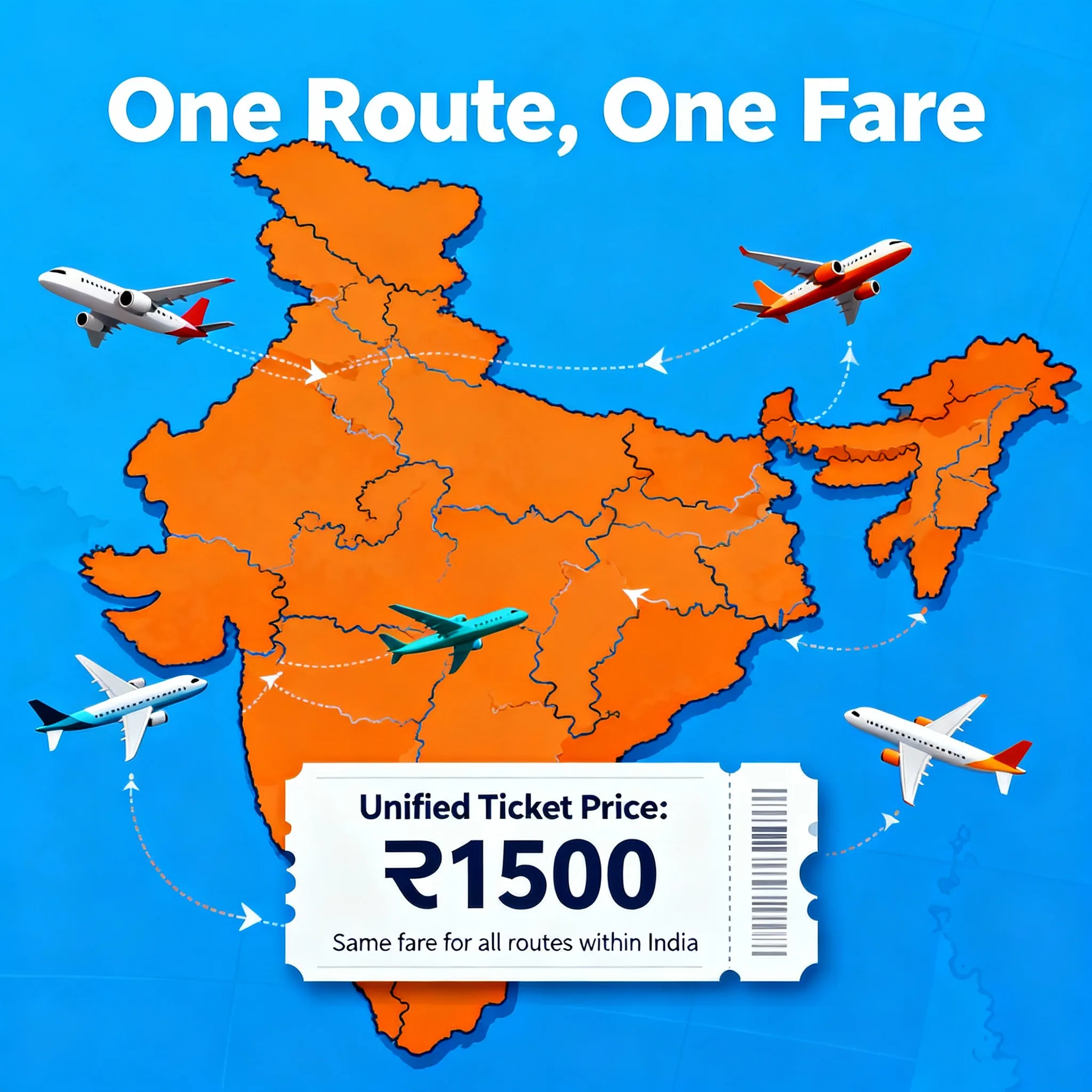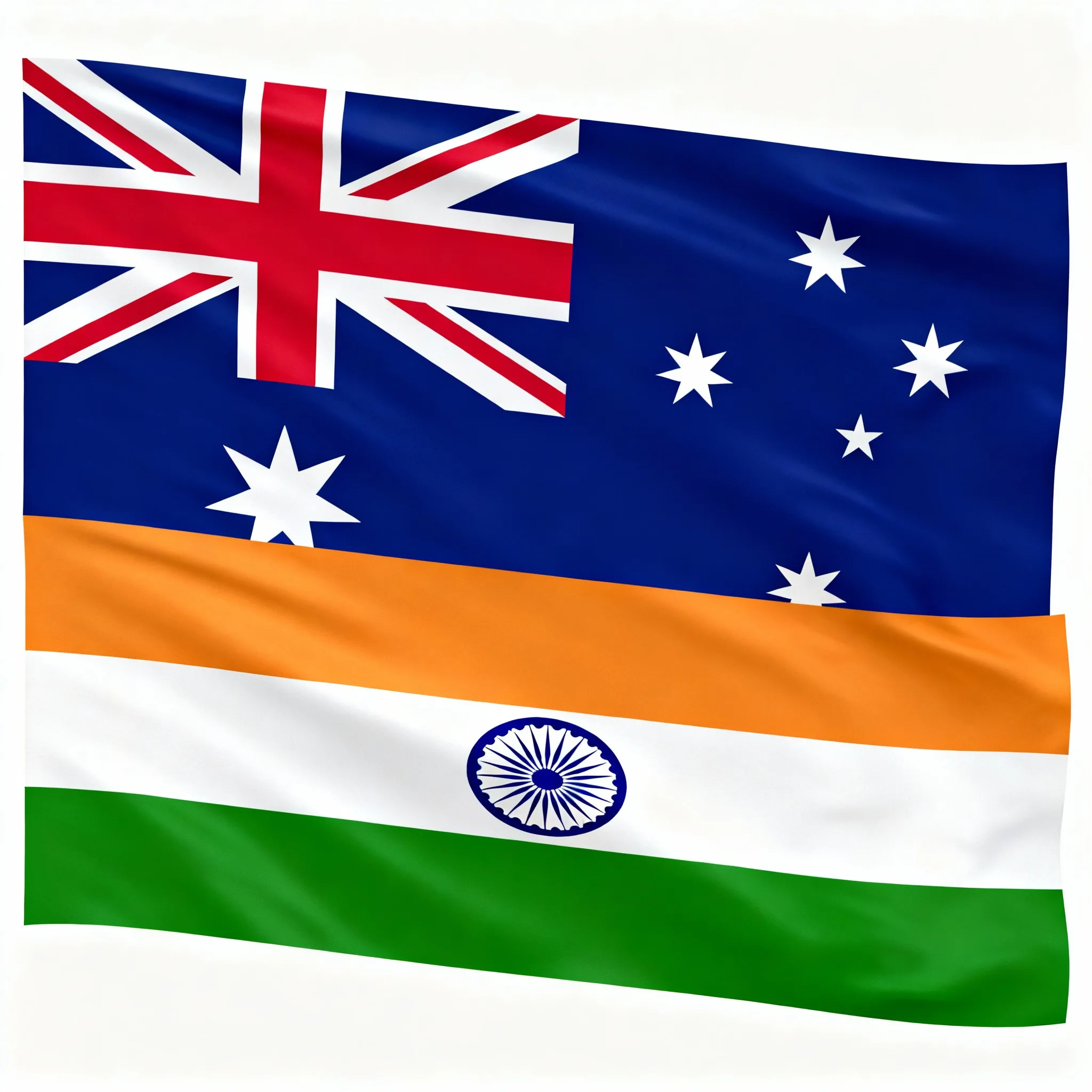The Indian government has just initiated a test program for some domestic flights called “One Route, One Fare,” or Fare Se Fursat. This is a bold and smart step. With this arrangement, the price of a ticket for a given route keeps the same, even if the passenger books it the day they leave.
Alliance Air is testing this plan on short and medium routes between tier-2 and tier-3 cities from October 13 to December 31, 2025.
Also Read: New IRCTC Aadhaar Link and Authentication Steps for Tatkal Booking
Why Introduce One Route, One Fare?
First and foremost, the premise promises that prices would be stable. The prices of airline tickets in India change a lot right now due of when you book, the time of year, and how many people want to fly. Because of this, passengers, especially those who book late, are often astonished by how much they have to pay at the last minute. The new idea would get rid of that anxiety.
Also, the government wants to encourage more people in smaller cities to fly instead of driving or taking the train by keeping prices stable. This will help connect regions. The plan is actually being made to fit with India’s regional connectivity program, UDAN (Ude Desh ka Aam Naagrik).
A fixed fare model may also cut down on speculative booking, which is when people book early or cancel to protect themselves against price changes. It might also make it easier for airlines that fly these routes to predict how much money they will make.
- Powerful 1800W Heating: Rapid air circulation technology delivers faster and even cooking with up to 90% less oil.
- Large 7.5L Capacity: Perfect for large families or batch cooking—fry, grill, roast, and bake with ease
- Digital Touch Panel: User-friendly interface for precise time and temperature control.
How It Works — Key Features & Conditions
- For a given route, the fare remains static irrespective of the booking date — whether a month in advance or just hours before departure.
- The pilot covers select routes only, not the entire domestic network.
- It is being run by Alliance Air, which primarily connects smaller cities under UDAN.
- The period is limited to a pilot phase (October 13 to December 31, 2025) to evaluate feasibility, passenger response, and operational challenges.
Because it is still in pilot mode, many details — such as how many seats per flight will be under this fare, and what happens in case of overbooking or cancellations — remain to be seen.
Benefits and Challenges
Benefits
- Transparency & Trust: Passengers can plan without fear of sudden fare hikes.
- Accessibility: Smaller towns and first-time flyers may find air travel more approachable.
- Revenue Simplicity: Airlines can better anticipate revenue flows, at least on these routes.
- Reduced Gaming: Less incentive for ticket reselling or speculative holds.
Challenges
- Profitability Risk: If demand surges, airlines lose the ability to capture that upside.
- Cost Structure: Fuel, airport charges, and crew costs may vary, making fixed fare hard to maintain.
- Route Viability: Some routes may not sustain with fixed fares, especially in low-traffic segments.
- Scalability: Rolling this out across more routes without harming competition or service quality could be complex.
🌍 Implications for Indian Aviation
If this pilot succeeds, One Route, One Fare might become more widespread. In that case:
- It could reshape pricing models, especially for regional and short-haul routes.
- Airlines might need to innovate in non-fare services (ancillary revenue, loyalty programs, class differentiation) to maintain margins.
- Regulatory oversight may increase to ensure fairness, especially if this becomes a norm beyond select routes.
- Passengers may start to expect more stable pricing, reducing the “rush to book early” behavior.
However, it is unlikely to fully replace dynamic pricing on high-demand trunk routes such as Delhi–Mumbai or Delhi–Bengaluru. Rather, it may coexist selectively.
In sum, One Route, One Fare represents a bold experiment in Indian aviation — an attempt to combine predictability and fairness with operational viability. While the pilot is limited in scope, its success or failure will carry lessons for how air travel evolves in India. For now, it offers hope to many travelers that the days of sudden fare shocks might one day be behind us.














Join Us on Social Media!
Stay updated with the latest from EasyBuzz. Connect with us: